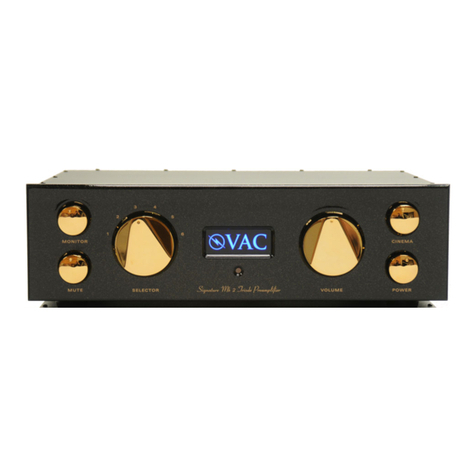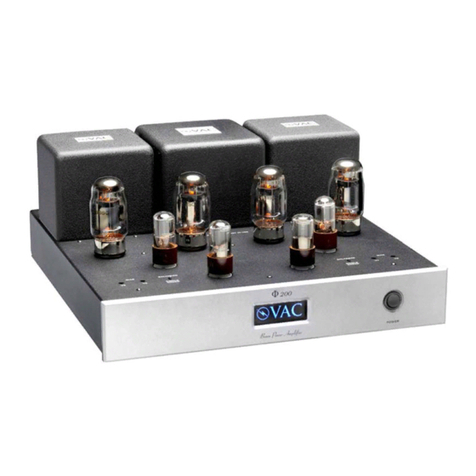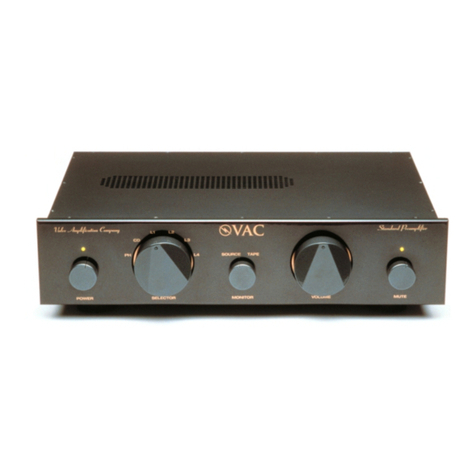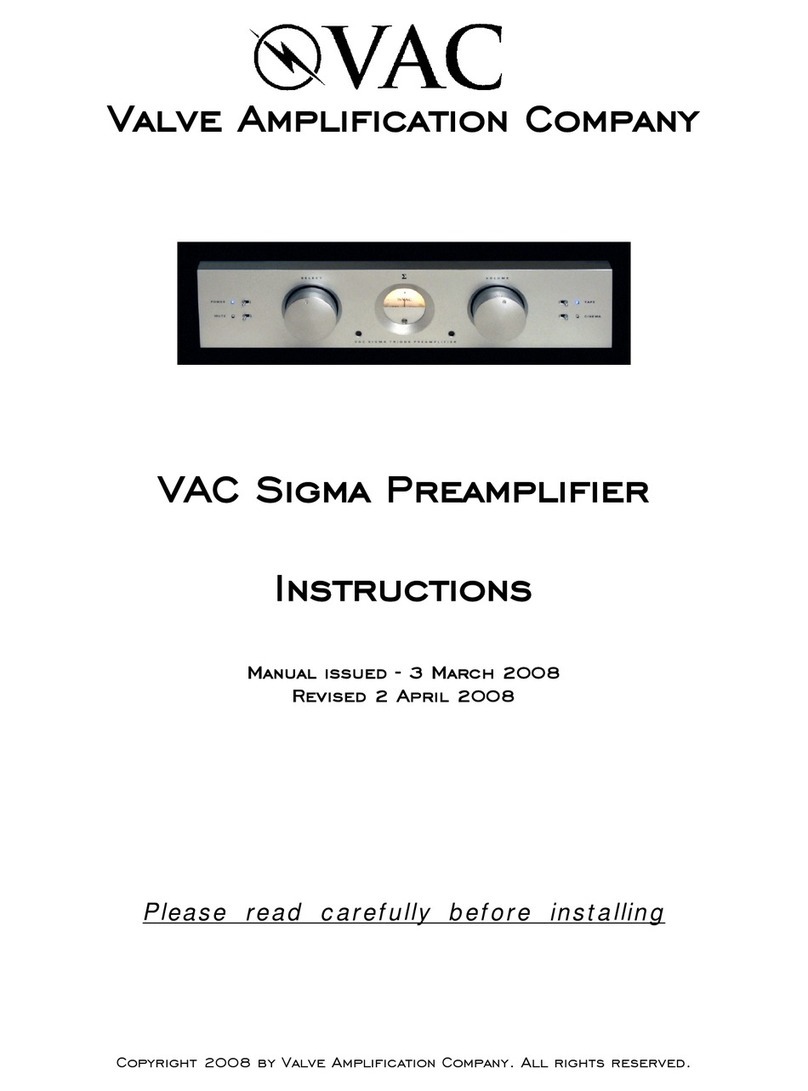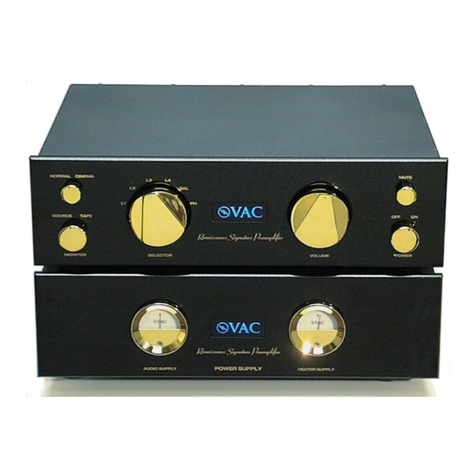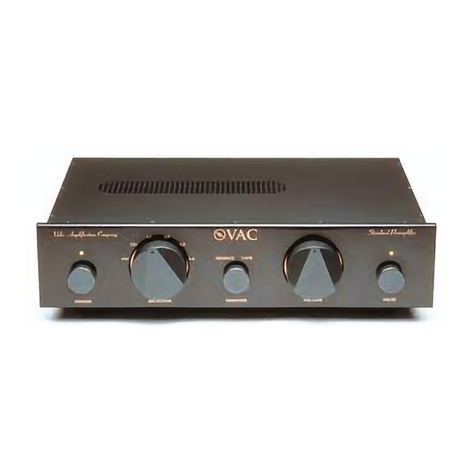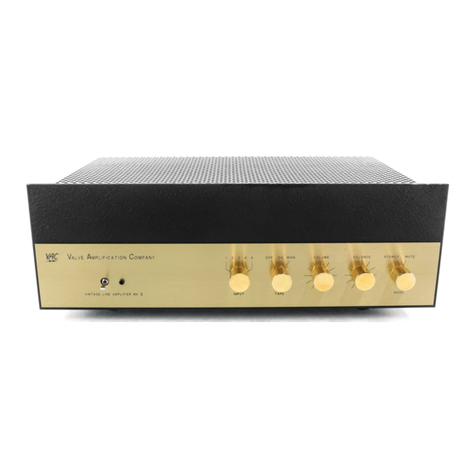
Page 6
Output Tube Bias Adjustment:
Youramplifier has beenshippedwiththeoutputtubebias properlyset. Nonetheless, it shouldbe
checkedwhenyou install youramplifier and approximatelyonce everymonththereafter. It must
alsobe adjustedeachtime a tube is replaced.
Adjustmentof theoutputtubes is quite easy,and requires onlyasmall screwdriver. Onthefront
panel are twobi-colorLEDs, eachwithanadjacentadjustmentcontrol. ViewtheLEDsfrom
directlyfromabove. Adjust theLEDstobegreenwhentheamplifier is notplaying music. To set,
turnthecontrolclockwise until theLED just beginstochangetoanamber/redcolor, and thenback
the control off just slightlytorestore the pure greencolor.
Asmusic plays, theLEDswill varyfromgreentored.Checkthebias ifyou ever see anLED stay
redwhile music is notplaying,orifanLED does nottend towardamber orredwhenmusic is
playing.Iftheflashing oftheLEDsis bothersomewhile listening,theswitchon thefrontlabelled
"Bias Test" canbeset to"0",disabling theLEDs. Theswitchmust thenbeset to"1"tocheckthe
bias ofthe output tubes.
Anytubethat cannotbeadjustedtothecorrect bias pointshouldbereplaced.Anytubewhich
requires constant readjustment shouldbereplacedimmediately.Never operate theamplifier with
anLED that shows redwhenmusic is not playing.
Wheninstalling newtubes, set thebias controls fullycounter-clockwise. Checkthebias ofboth
channels as the amplifier warms up - don't wait tenminutes.
Bias levels shouldbecheckedmonthlytoensure optimumsound quality.It is notunusual forthe
bias tochangewithtime, particularlywhentubes are new.Thegreatest amountofdriftoccurs
during thefirst 200 hours ofatube'slife. Thedriftmaychangedirection periodically,suchthat the
bias controlmust beincreasedand later decreased,orvice versa. Checkbias ifthesound seems
lacking indetail or dynamics.
Matching ToYour Loudspeakers
Likemanymoderntubeamplifiers, theAuricle includes multiplematchtapsforthespeaker
outputs. DoNOT assumethat thesetting whichcorrespondstoyourspeakers’ publishedimpedance
specification will yieldthebest sound.Duetothevariousstandardsbywhichimpedance canbe
measured,nottomention thefact that aspeaker’s impedance varies withfrequency,it is impossible
toassert withcertaintywhichoutput tapwill yieldthe best sound. For this reason, VAC strongly
suggests auditioning yourspeakers through all settings. Ingeneral, wefind that aspeaker’s
minimumimpedance is more importantthanits nominal (average) impedance whendetermining
whichsetting is correct. Alackofbass response oftenindicates that alower impedance setting
shouldbe tried.
